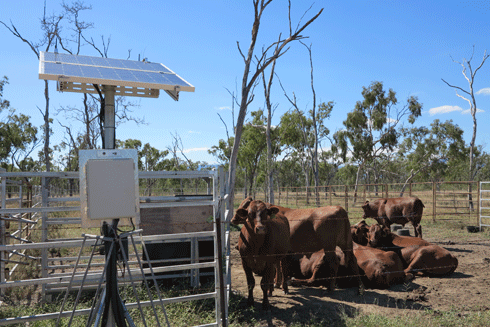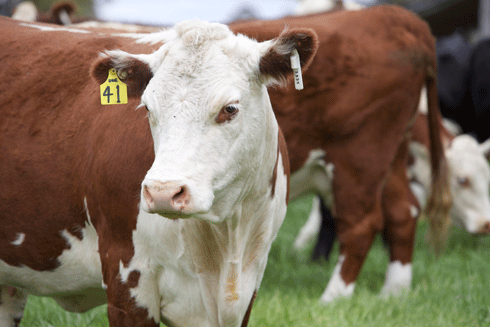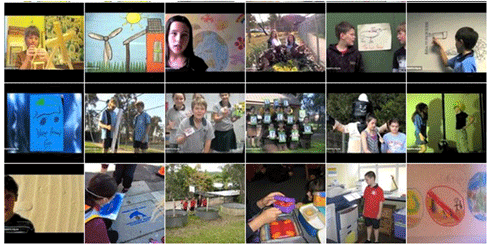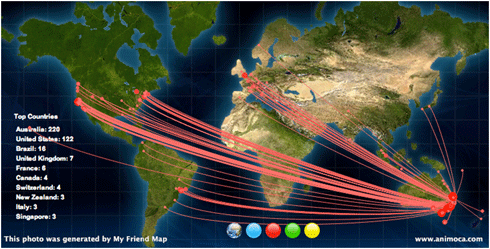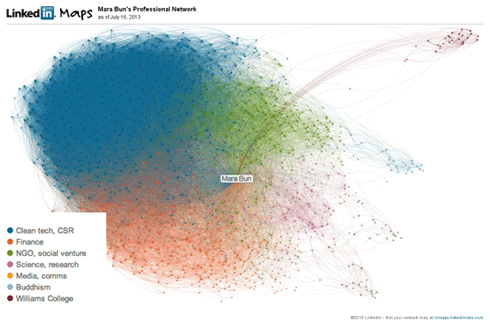
|
Published: 22 July 2013
How high-speed data will open up the future for farmers
While sensors, soil moisture probes and super smart sheep and cattle tags may seem whacky today, new research from CSIRO shows that the future of smart farming isn’t all that far off.
‘It’s going to be warm today,’ John’s wife Carrie says to him as they finish their coffee. They smile. ‘Look after yourself out there, OK?’
He nods, and then watches her as she walks into their video conferencing room. She’s going to talk with a marketing advisor about the consumer demand for animal welfare information behind food and animal products. It’s a good idea for their beef and merino wool, John thinks to himself, and could add value to their products in the marketplace, both in Australia and overseas.
Already, 2018 has produced some warm, humid days, and today is going to be another one. John sighs, and pulls out his tablet. He looks up the map of his farm, overlaying air temperature and the position of his cattle. They’re in the best paddock already, he thinks, with plenty of shade and water.
He flicks the map to look at the soil quality across the farm. Good, he thinks, the moisture is high and salinity is low. He notes that the pasture – a mixture of native grasses, clovers, rye-grass and fescue – is starting to look depleted in the paddock where the cattle are; he’ll move them to another paddock when the weather conditions are cooler, he decides. Since installing the network of soil sensors, he’s used less water and less fertiliser, but produced better pasture and more grains for his livestock.
The tablet buzzes. John looks at the incoming alert: Weather conditions suitable for gastrointestinal parasite in the weaner paddock. Oh no, he thinks. Worms have affected some of John’s lambs in the past, causing poor nutrition and poor growth. Do they need drenching? He knows infection rates are currently low, so decides the best course of action for now will be to move the younger, more vulnerable animals into a paddock with longer grasses, lower soil moisture and a lower worm risk.
He sends a sms to his workers to tell them about the alert, and that they’ll have to move the weaners this morning. He sets another alert to notify him if any of his sheep start to change their grazing patterns and other behaviours – he’s found in the past that changes in behaviour can be early warning signs of infections.
John puts the tablet away and walks towards the door. Yep, it’s sure going to be a warm day, he thinks. He puts on his boots, his hat, charges his tablet and heads out onto the farm, towards his sheep.
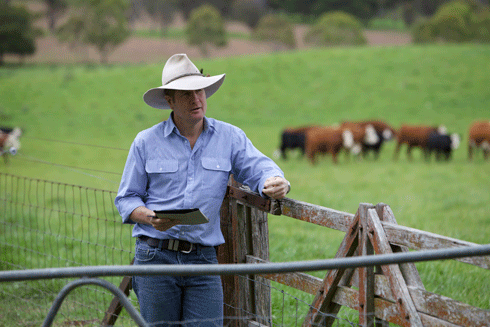
|
|
Professor David Lamb from the University of New England on the Kirby Smart Farm near Armidale. Credit: NBN Co
|
Farmers John and Carrie may not be real people, but that doesn’t mean this scenario is entirely science fiction. CSIRO researchers have been working with the University of New England (UNE), and the Australian Centre for Broadband Innovation (ACBI) to trial some of these new technologies at the Kirby Smart Farm in Armidale.
It’s a commercial farm with sheep for merino wool, beef cattle and pastures to feed the livestock. And with new technologies in place, researchers use the farm to explore and demonstrate the impact of broadband and related digital services for Australia’s rural sector. Kirby Farm is just one of many different smart farming-related projects, which you can read more about in this smart farming report released last week, or our blog on the same topic.
Kirby Farm has a hundred sensors that monitor soil moisture, temperature, salinity and air temperatures to create live maps. It uses ear tags to monitor the location of livestock, and it is currently testing the use of accelerometers and GPS collars to monitor animal behaviour.
So far, research into smart farming has highlighted some opportunities for farms to become more productive, with better soil fertility and feed allocation, for example. However, one of the biggest opportunities, according to Kerry Taylor, the lead researcher on the Smart Farm project, is ‘industry optimisation based on the aggregation of farm-scale data.’
Dr Taylor leads a team of researchers who are building and testing the software systems that will allow all the data to be transmitted, stored and analysed seamlessly. It will also allow farmers to search and query the data using everyday language – much like a Google search.
Smart farm technology will help farmers to make daily management decisions that improve farm productivity, and help create new opportunities for our agricultural products and expertise. Broader benefits include the development of new markets and ways to value-add to products; the development of services supporting the agricultural and food industries; better environmental management; and improvements of the quality of life in the rural sector.
See what’s going on at the Kirby farm here:
To read more about CSIRO’s work on digital farming see the smart farming series at the news@csiro blog or download the latest CSIRO report Smart Farming: leveraging the impact of broadband and the digital economy.


